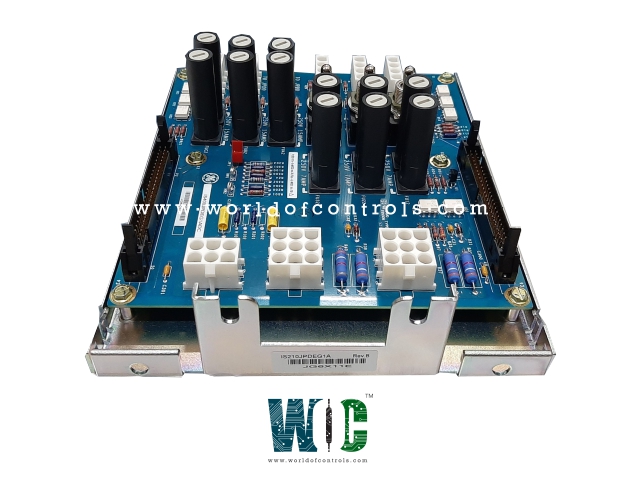
World Of Controls understands the criticality of your requirement and works towards reducing the lead time as much as possible.
IS210JPDAG1A - Local AC Power Distribution (JPDA) Board is available in stock which ships the same day.
IS210JPDAG1A - Local AC Power Distribution (JPDA) Board comes in UNUSED as well as REBUILT condition.
To avail our best deals for IS210JPDAG1A - Local AC Power Distribution (JPDA) Board, contact us and we will get back to you within 24 hours.
SPECIFICATIONS:
Part Number: IS210JPDAG1A
Manufacturer: General Electric
Series: Mark VIe
Product Type: Local AC Power Distribution (JPDA) Board
Generator current inputs: 0 to 5 A
Analog inputs Current inputs: 4-20 mA
Analog output current: 0-20 mA
Size: 15.9 cm high x 17.8 cm wide
Operating Temperature: -30 to +65°C
Frequency: 50 or 60 Hz
Repair: 3-7 Day
Availability: In Stock
Weight: 2 lbs
Country of Origin: United States
Manual: GEH-6721L
FUNCTIONAL DESCRIPTION:
IS210JPDAG1A is a Local AC Power Distribution (JPDA) Board Manufactured and designed by General Electric as part of the Mark VIe Series used in GE Distributed Turbine Control Systems. The Local AC Power Distribution (JPDA) board provides AC power distribution, power isolation, and branch circuit protection for each control or I/O function requiring AC power. Typical applications include AC relay and solenoid control power, ignition transformer excitation, and contact wetting. Each output includes a fuse, a switch for power isolation, and a lamp to indicate the presence of output voltage. JPDAG1 provides fuses that are coordinated with the rating of the system wiring and connectors. JPDAG2 and G3 are used when fuse ratings coordinated with a specific application are required. Two different fuse sizes are provided to best accommodate local fuse preferences.
INSTALLATION:
Power input and output cables have three-position Mate-N-Lok connectors. TB1 is the chassis ground connection. When installing the JPDA it is important to provide a ground lead from TB1 to the system PE. This creates a ground path for the metal switch bodies.
OPERATION:
INPUTS: Multiple JPDA boards receive power from a single JPDM Main Power Distribution Module. This power input is either 120 V rms or 240 V rms, 50/60 Hz. Two 3-Pin Mate-N-Lok connectors are provided. One connector receives AC input power and the other can be used to distribute ac power to another JPDA board in daisy chain fashion. It is expected that the low or neutral side of the input power is grounded.
OUTPUTS: Four output circuits are provided with three-pin Mate-N-Lok connectors. Each output circuit includes branch circuit protection and a pair of isolation contacts for the non-grounded line. There is also a green lamp to indicate the presence of voltage across the output terminals.
WOC has the largest stock of GE Distributed Turbine Control System Replacement Parts. We can also repair your faulty boards. WORLD OF CONTROLS can also supply unused and rebuilt backed-up with a warranty. Our team of experts is available round the clock to support your OEM needs. Our team of experts at WOC is happy to assist you with any of your automation requirements. For pricing and availability on any parts and repairs, kindly get in touch with our team by phone or email.
What is a Local AC Power Distribution (JPDA) Board?
A Local AC Power Distribution (JPDA) Board is a component used in electrical systems to distribute alternating current (AC) power to various devices or subsystems within a localized area, such as a building or facility.
What is the purpose of a JPDA Board?
The primary purpose of a JPDA Board is to efficiently distribute AC power from a main source to multiple outlets or loads, ensuring proper voltage levels and protection against overloads or faults.
What are the key components of a JPDA Board?
Typical components include circuit breakers, fuses, surge protectors, voltage regulators, transformers, terminal blocks, and monitoring devices such as meters or alarms.